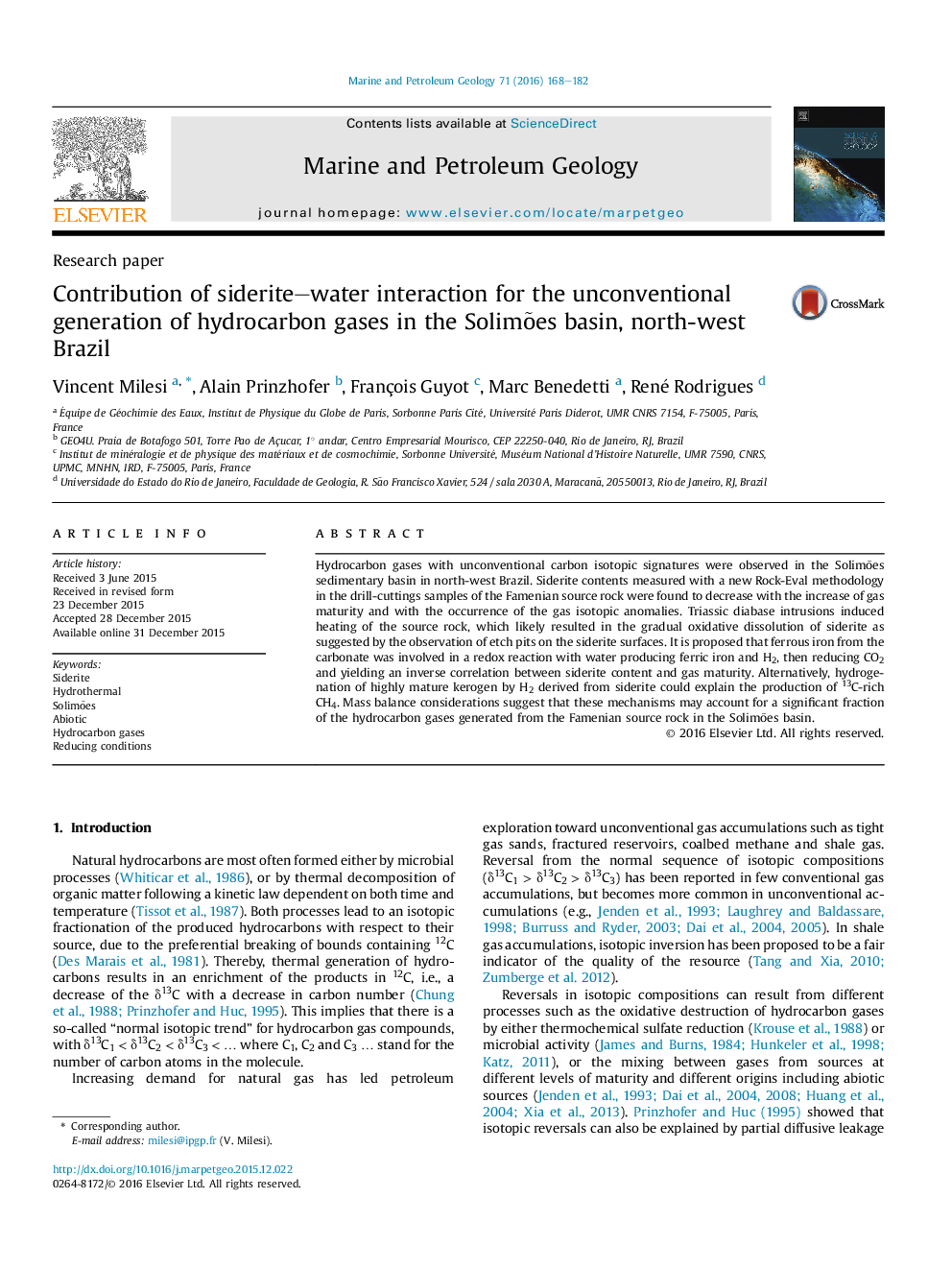| Article ID | Journal | Published Year | Pages | File Type |
|---|---|---|---|---|
| 4695422 | Marine and Petroleum Geology | 2016 | 15 Pages |
•A new mechanism for generation of hydrocarbon gases in the Solimões basin is proposed.•Siderite (FeCO3) oxidative dissolution in the source rock yielded transient H2 gas.•The produced H2 reacted with CO2 or highly mature kerogen, yielding methane.•This mechanism may account for a significant fraction of methane in the Solimões basin.
Hydrocarbon gases with unconventional carbon isotopic signatures were observed in the Solimões sedimentary basin in north-west Brazil. Siderite contents measured with a new Rock-Eval methodology in the drill-cuttings samples of the Famenian source rock were found to decrease with the increase of gas maturity and with the occurrence of the gas isotopic anomalies. Triassic diabase intrusions induced heating of the source rock, which likely resulted in the gradual oxidative dissolution of siderite as suggested by the observation of etch pits on the siderite surfaces. It is proposed that ferrous iron from the carbonate was involved in a redox reaction with water producing ferric iron and H2, then reducing CO2 and yielding an inverse correlation between siderite content and gas maturity. Alternatively, hydrogenation of highly mature kerogen by H2 derived from siderite could explain the production of 13C-rich CH4. Mass balance considerations suggest that these mechanisms may account for a significant fraction of the hydrocarbon gases generated from the Famenian source rock in the Solimões basin.
